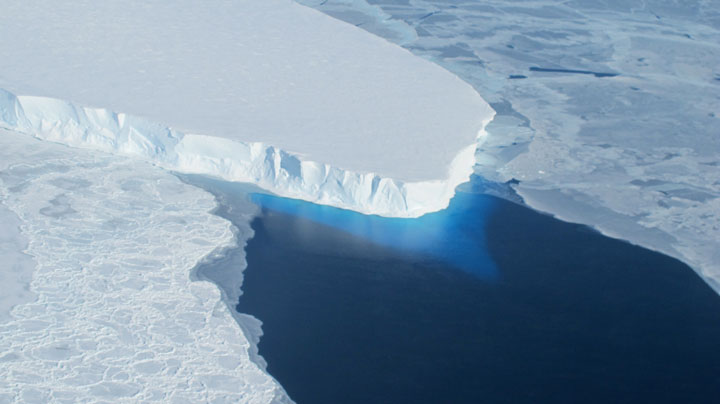Scientists are alarmed after discovering almost 8,000 lakes forming in East Antarctica.

Glaciologists aren’t unfamiliar with these types of lakes: they’ve been spotted across Greenland. And that’s what has them concerned.
Antarctica contains the largest mass of ice on Earth, stretching 14 million square kilometres in the south pole. Unlike the Arctic, the Antarctic ice sheet remains year-round. Though scientists have known for some time that West Antarctica is showing a decline in ice, the belief was that East Antarctica was more stable.
READ MORE: Volcanic eruption threatens one million penguins in sub Antarctic
However, the researchers found that, between 2000 and 2013, about 8,000 meltwater lakes formed during the summer. What’s alarming is that they believe that the lakes are draining down the floating parts of the glacier. This could weaken it, making it more susceptible to fracturing and thus breaking apart. The scientists aren’t just hypothesizing: this is what has been happening to Greenland, which measures about 1.7 million square kilometres.
In the study, published in the scientific journal Geophysical Research Letters, the authors report on the development of the lakes, found around Langhovde Glacier. As the summer air warmed, sometimes reaching above 0 C, it caused lakes to form atop the glacier (the warmer temperatures were seen often in the summer of 2012). As witnessed in the case of the Greenland lakes, the Antarctic lakes seemed to drain downward.
WATCH: Scientists film sub-Antarctic volcano erupting

Though this has been seen before in other parts of the Antarctic, this is the first time scientists have seen it in this region. The concern among glaciologists is that it could weaken the ice shelf, though they were unable to prove that this was indeed the case.
“The size of the lakes … are probably not big enough to do much at present, but if climate warming continues in the future, we can only expect the size and number of these lakes to increase. So that’s what we’re looking at,” Stewart Jamieson, a glaciologist at Durham University in the U.K. and one of the study’s authors told The Washington Post.
While the Antarctic isn’t seeing the same sort of ice melt as Greenland — which has increased by 30 per cent from 1979 to 2006 — it’s still something that scientists are closely monitoring (though, unlike the Arctic, Antarctic sea ice is increasing or stable). That’s because the Greenland and Antarctic ice sheets hold 99 per cent of Earth’s fresh water. If the Greenland ice sheet melted, sea levels would rise by about six metres. If the Antarctic ice sheet melted, levels would rise by 20 metres.


Comments